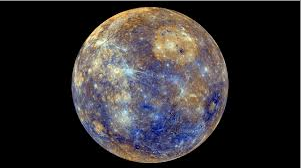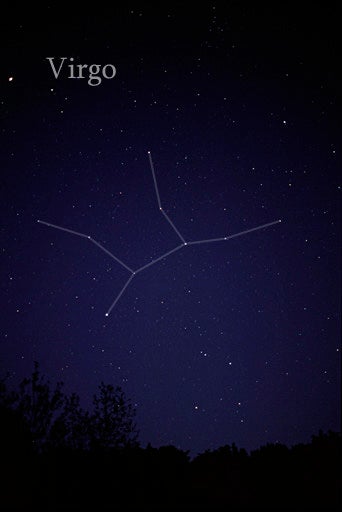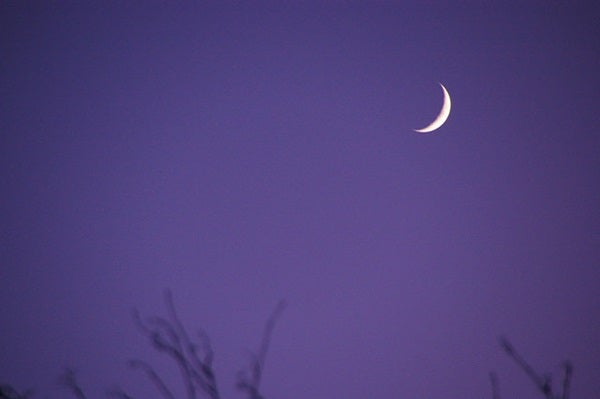Friday, March 24
If the opportunity presents itself, check out the elusive zodiacal light these next few nights. From the Northern Hemisphere, late winter and early spring are great times to observe this glow after sunset. It appears slightly fainter than the Milky Way, so you’ll need a clear moonless sky and an observing site located far from the city. The Moon will stay out of the evening sky through March 28. Look for a cone-shaped glow, which has a broad base and points nearly straight up from the western horizon, after the last vestiges of twilight have faded away.
Saturday, March 25
This is a good week to look for Sirius in the evening sky. The night sky’s brightest star (at magnitude –1.5) appears in the south-southwest after twilight ends. It then lies about one-third of the way from the horizon to the zenith from mid-northern latitudes. (The farther south you live, the higher it appears.) If you point binoculars at Sirius, look for the pretty star cluster M41 in the same field of view, just 4° below the star.
Venus reaches inferior conjunction at 6 a.m. EDT. This position places the inner planet most nearly between Earth and the Sun (precisely 8° north-northwest of our star), so it is lost in the glare. But the brilliant world orbits the Sun quickly, and it will return to view before dawn within a week.
Sunday, March 26
Saturn rises around 2 a.m. local daylight time and climbs some 25° high in the south-southeast by the time morning twilight begins. The ringed planet shines at magnitude 0.4 and lies in the northwestern corner of Sagittarius the Archer. When viewed through a telescope, Saturn shows a 17″-diameter disk surrounded by a stunning ring system that spans 38″ and tilts 26° to our line of sight.
Monday, March 27
The sky’s brightest asteroid, magnitude 7.5 Vesta, shows up quite easily through binoculars this week. To find the minor planet, start at magnitude 1.2 Pollux in northern Gemini and then drop 2.4° southwest to magnitude 4.1 Upsilon (u) Geminorum. Vesta lies 0.7° due south of Upsilon this evening.
New Moon occurs at 10:57 p.m. EDT. At its New phase, the Moon crosses the sky with the Sun and so remains hidden in our star’s glare.
Tuesday, March 28
Jupiter stands out among the background stars of central Virgo from the time it rises around 8 p.m. local daylight time until morning twilight is well underway. The giant planet is near its best for the year right now, reaching opposition next week (on April 7). Jupiter shines at magnitude –2.4, which makes it the brightest point of light in the evening sky. The best time to view the planet through a telescope is when it climbs highest in the south, a position it reaches around 2 a.m. Jupiter’s spectacular disk spans 44″, and its dynamic atmosphere shows at least two parallel dark belts.
Wednesday, March 29
With an age of 4.5 billion years, “young” might not seem an appropriate word to describe our Moon. But tonight, you have a nice opportunity to see what astronomers call a “young Moon” — a slender crescent visible in the early evening sky. With New Moon having occurred two nights ago, only 5 percent of our satellite’s disk appears illuminated after sunset tonight. You should notice an ashen light faintly illuminating the Moon’s dark side. This is “earthshine,” sunlight reflected by Earth that reaches the Moon and then reflects back to our waiting eyes. With binoculars, scan some 10° to the Moon’s lower right and you also should pick up the glow from Mercury, which shines brightly at magnitude –0.6.
Thursday, March 30
The waxing crescent Moon climbs significantly higher in the evening sky with each passing day, and tonight it serves as a guide to ruddy Mars. The planet stands about 7° (approximately one binocular field) to the Moon’s lower right. The pair appears nearly 20° high in the west once twilight fades to darkness and doesn’t set until after 10 p.m. local daylight time. The Red Planet shines at magnitude 1.5 among the background stars of Aries the Ram.
The Moon reaches perigee, the closest point in its orbit around Earth, at 8:32 a.m. EDT. It then lies 226,088 miles (363,853 kilometers) away from us.
Friday, March 31
This evening, the waxing Moon sits on the western edge of the Hyades star cluster in Taurus the Bull. The 20-percent-lit crescent lies below and a little to the right of 1st-magnitude Aldebaran, the orange sun that marks the upper left corner of the V-shaped Hyades. In reality, however, the star is a foreground object that only appears along the same line of sight as the cluster.
Saturday, April 1
Mercury reaches greatest elongation at 6 a.m. EDT, and tonight marks the peak of its best evening apparition of 2017. The innermost planet lies 19° east of the Sun and stands 9° high in the western sky 45 minutes after sunset. It shines at magnitude –0.2 and shows up easily against the darkening sky. If you can’t spy Mercury right away, sweep the area with binoculars. A view of the inner world through a telescope reveals an 8″-diameter disk that appears 39 percent lit.
Sunday, April 2
After passing between the Sun and Earth just eight days ago, Venus already appears conspicuous in the predawn sky. It rises an hour before the Sun and climbs 6° above the eastern horizon 30 minutes later. The planet shines so brightly, at magnitude –4.2, that it shows up easily in the brightening twilight. A telescope will deliver spectacular views of the inner world’s 57″-diameter disk, which appears just 3 percent lit.












